After last weeks barley flop, I decided to try again. This time with Dan Lepard's barley bread recipe. I doubled the recipe and baked too large loaves. This bread has overall less barley flour but a lot of cooked barley added to the mix. I was hoping for a distinctive taste of barley but less stress than last week. The barley flour is lightly toasted in the oven for 10 minutes at 160 degrees fahrenheit. The smell of the toasted barley is quite strong, nutty and a little woody, this made the aroma of the dough very distinctively.
The barley grains were pot barley. In quite a few of the recipes in The Handmade Loaf, I've been swapping out cooked grains for sprouted grains. However, in this case this is not possible as hulling barley seems to damage the germ of the grain making it unable to sprout. Chad Robertson seems to think that purple barley varieties work better but these are only available from one supplier in the US. In this case, I simmered the barley for about 25minutes. They were cooked but still quite chewy.
The texture of the dough was initially extremely tough. It was difficult to include all of the flour and the dough felt like heavy clay. I reduced the honey to 20g per loaf and added an extra 50g of water per loaf to get a dough that was slightly more pliable than plasticine! The dough was similar to last week, a little stronger but clearly lacking gluten and soft rather than gummy like rye dough.
These loaves came out a lot better than the barley loaves from last week. I'm pleased with the result.
The second set of loaves I baked this week used the spelt porridge recipe from Tartine #3. I don't have too much to say about these loaves except I've decided to continue with 150g of leaven and retarding for 18 hours in the fridge.
I've tried to increase the hydration very slightly and used a little more water in the spelt flakes when making porridge as well. The spelt flakes absorb quite a lot of water so I add a little water so that they take about 5-10 minutes to cook. There is probably no need to cook the flakes and pouring boiling water on them would probably be sufficient. I've found there is a little bit of a difference between the two approaches as cooking seems to make the spelt flakes a little bit more glossy and gummy and they disappear into the dough more.
This is really lovely bread with a soft crumb. On the afternoon after being baked, the crust was thin crispy and totally irresistible. I'm coming round to the taste of spelt as a softer less bitter variety of wheat.
Happy Baking!
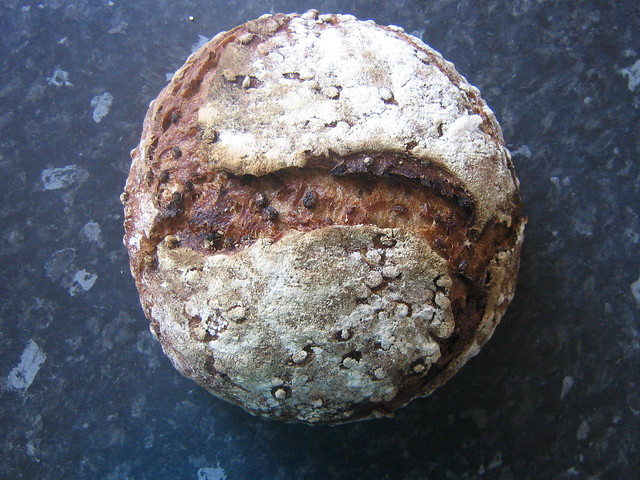
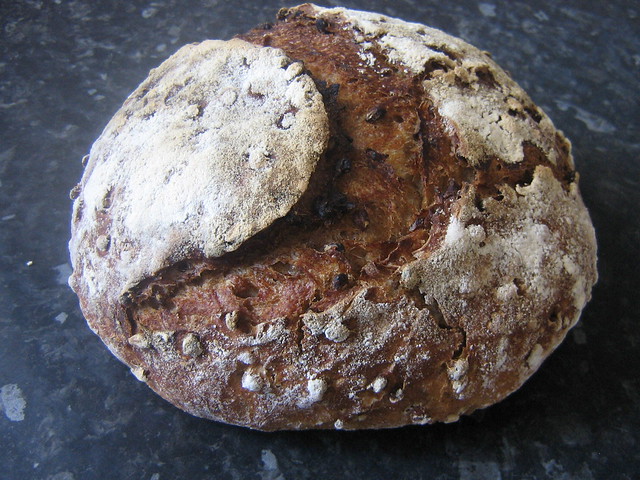
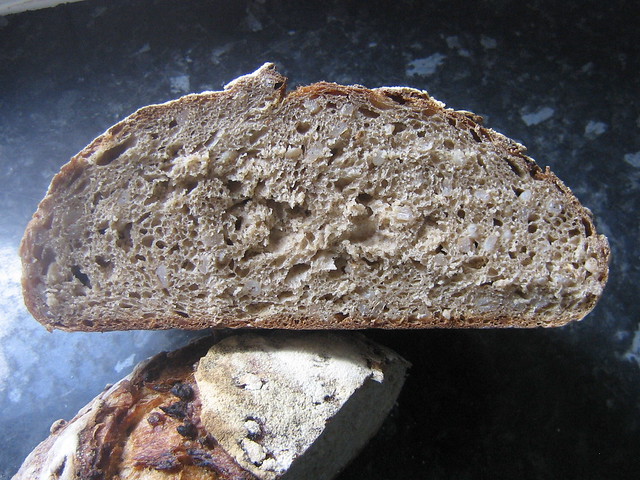

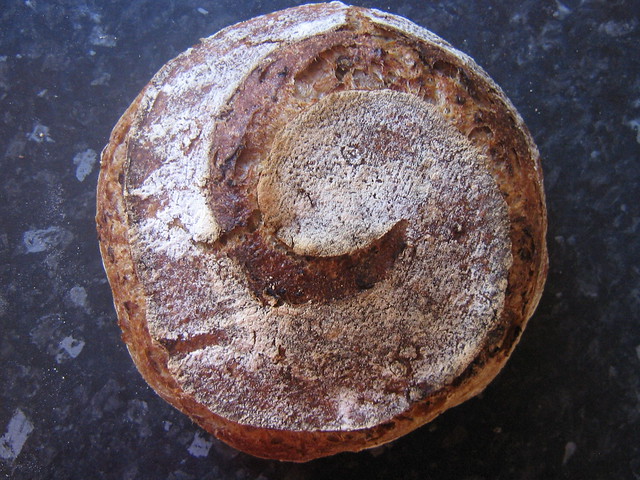
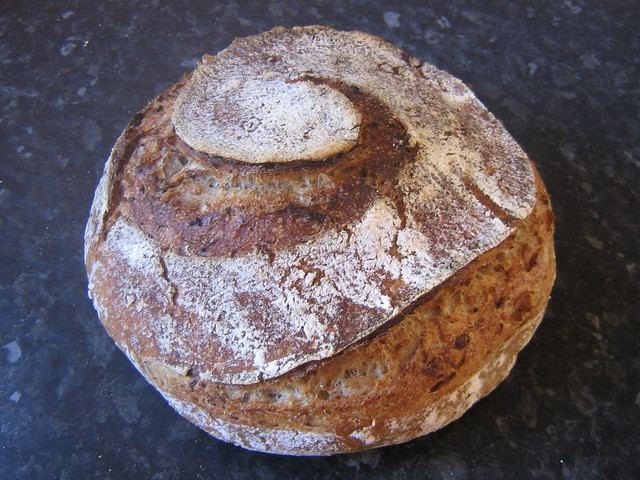
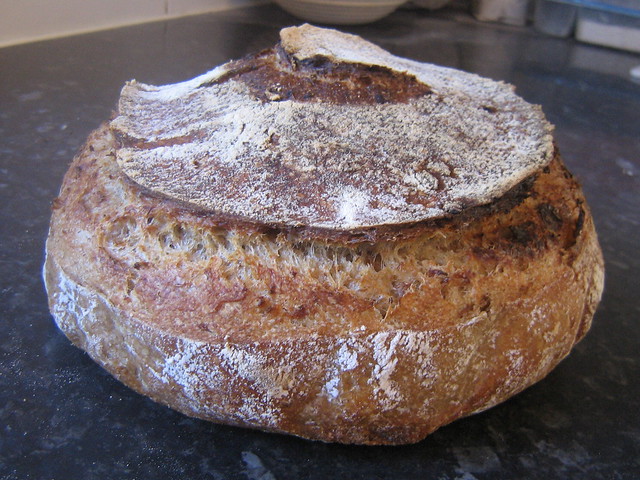
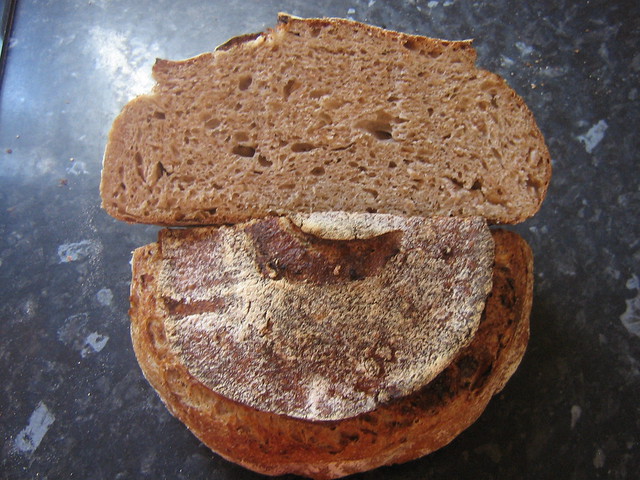

No comments:
Post a Comment